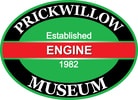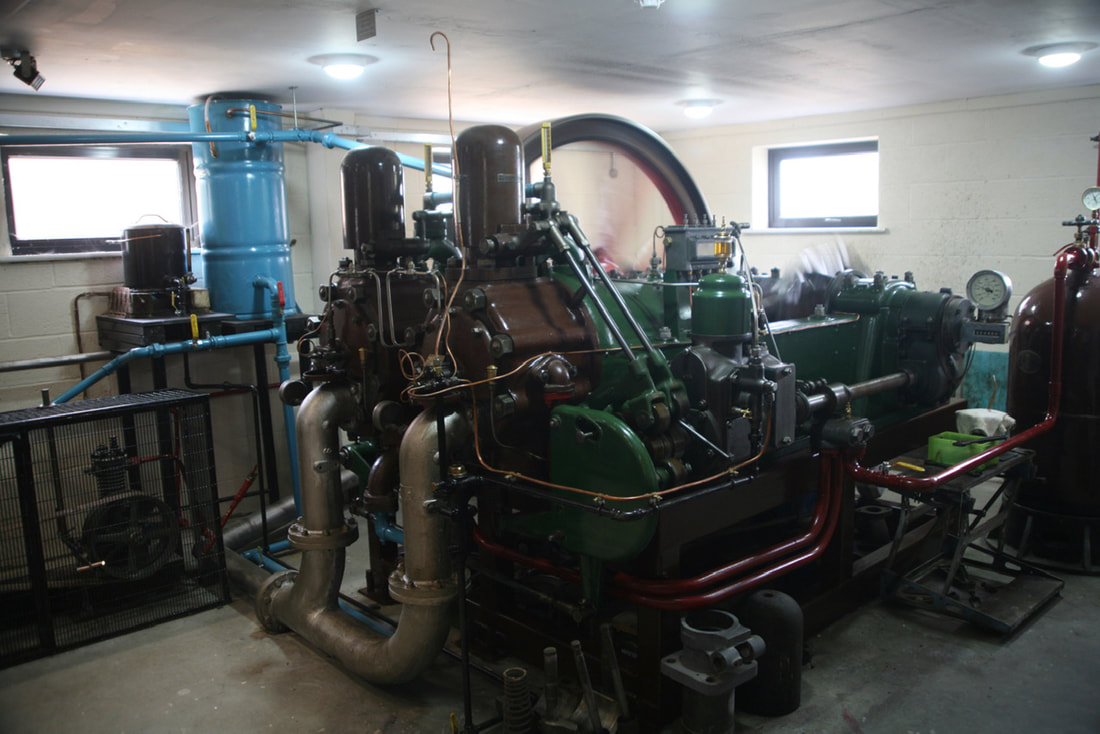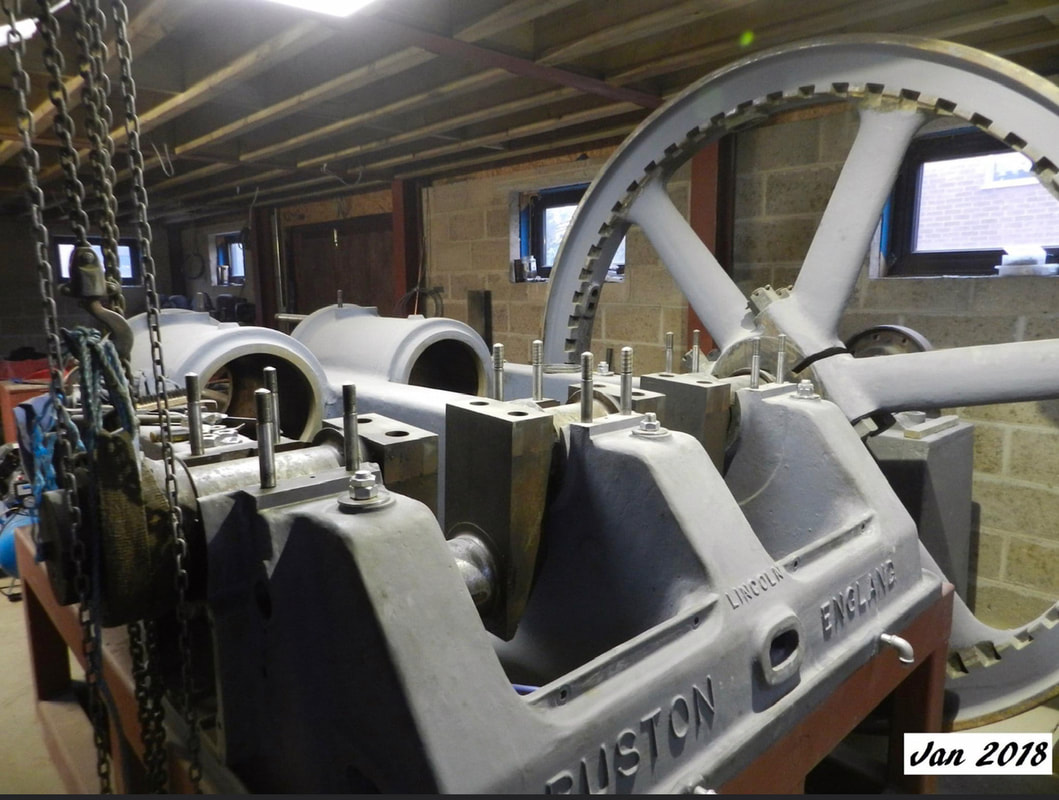Ruston Hornsby 9HRC
|
The Ruston Hornsby 2 cylinder, 114 HP, engine now on display in the Museum extension is a twin model 9HRC. The engine is made up of usable parts from two engines which were installed in 1939 at Puddock Bridge Pumping Station on the Forty Foot Drain near Chatteris. These engines were taken out of service in 1992 and stored at Green's Barn at Hasse near Prickwillow for over 20 years.
With the addition of the extension at the Museum, space was allocated to display a rebuild of the engines. Parts from the engines, including the two flywheels, were moved to the Museum over a four year period from 2014, with the cylinder block and crank placed in position ready to start work in 2018. With many parts heavily corroded and needing repair or reengineering to save and make usable, and with new piping needed for the lubrication and fuel system, the rebuild took until 2022, with the first public running taking place on 25th September 2022. |
Model: 9HRC
Number of cylinders: 2 Engine format: Horizontal open crank twin. Horse Power: 114 HP Maximum RPM: 275 Total weight: 7.85 tons Cylinder bore: 11 3/4”. (298.45mm) Piston stroke: 21”. (533.4mm) Coolant: Water. Fuel: Diesel. Lubrication: Camshaft driven pump to supply drip feed for cylinders and big ends. The main and drive support bearings are lubricated using a brass ring that passes through the oil in the sump lifting it to the top of the journal where it spread across the white metal bearing. For more information on the terminology we use to describe our engines, please visit our Engineering page. |



